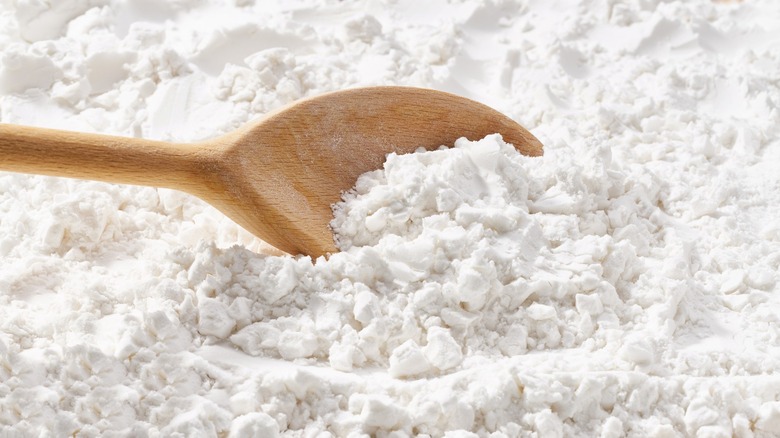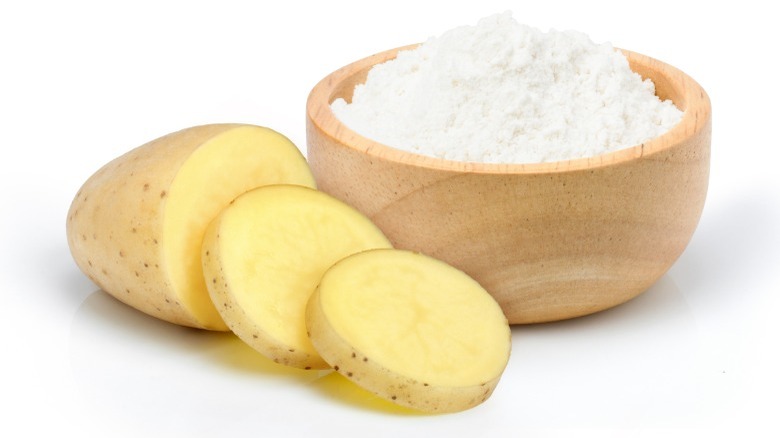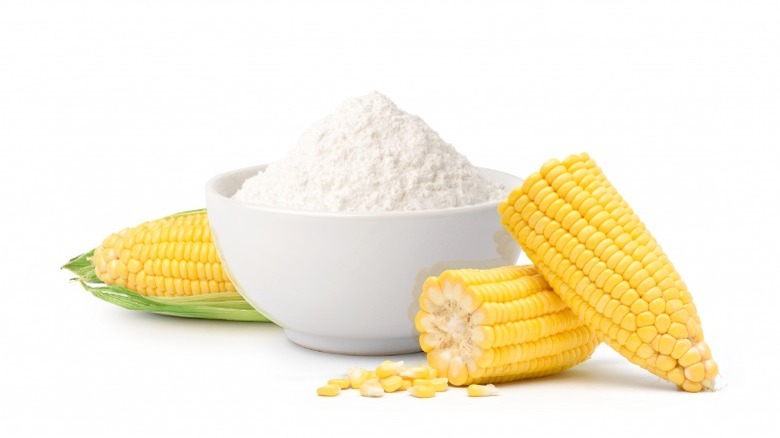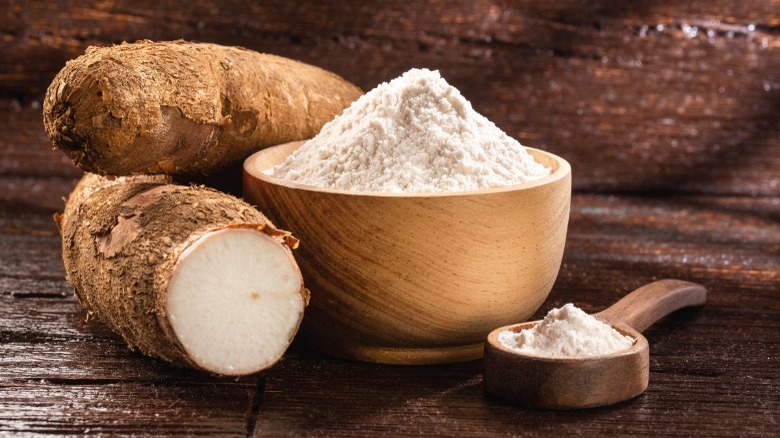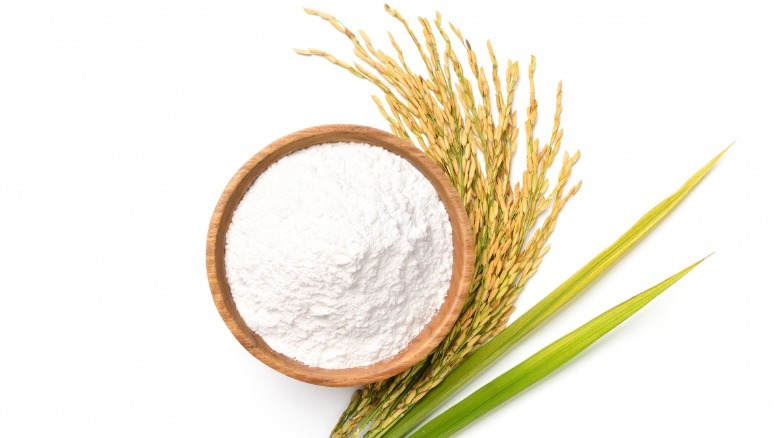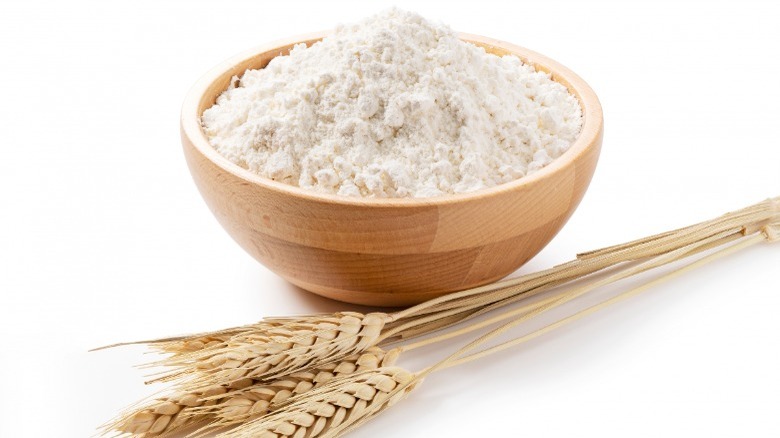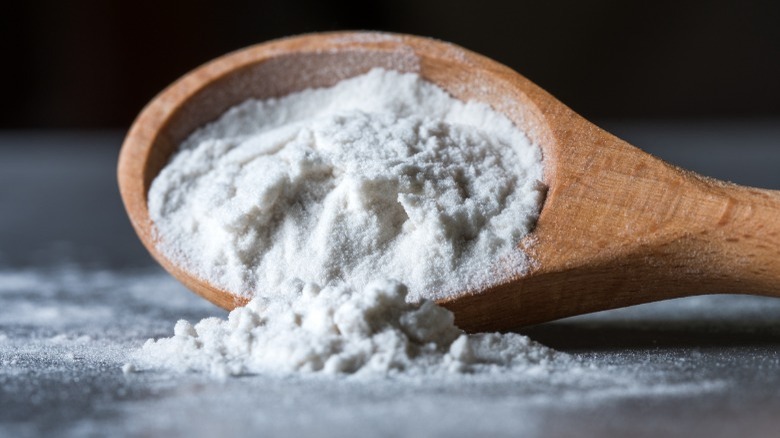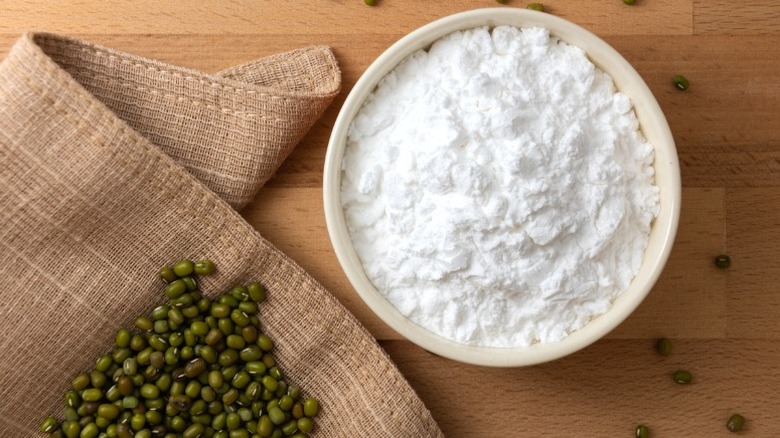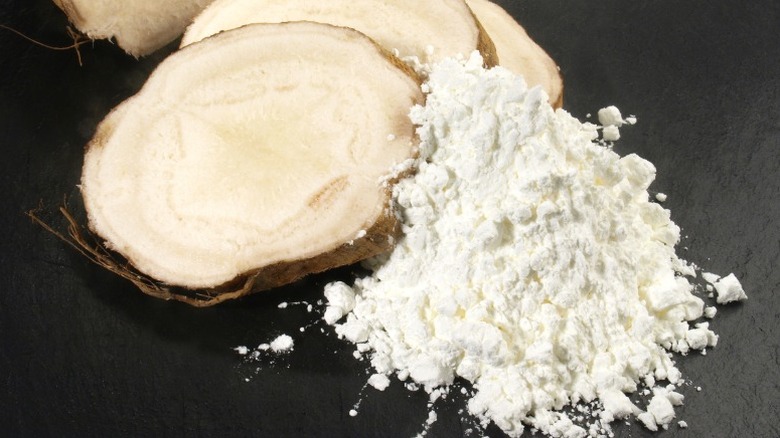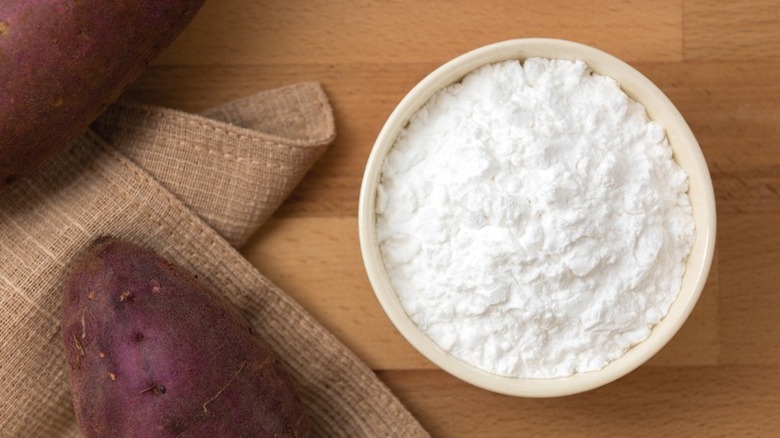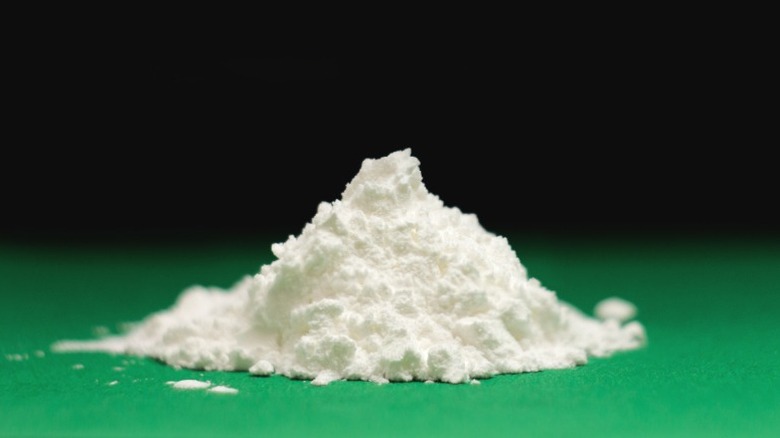11 Types Of Starches, Explained
Starches are complex carbohydrates in many plant-based sources, primarily in grains, roots, and tubers. Plants produce starch as a way to store energy, and it is the primary source of energy for many organisms, including humans — which is why potatoes, corn, rice, and pasta are beloved by everyone. In their purified, powdered form, these carbohydrates are used as thickeners, stabilizers, and binders, contributing to many foods' texture, appearance, and taste.
Each starch has its own unique chemical composition, properties, and functionality. However, they all have something in common: amylose and amylopectin molecules, or the key players in starch performance. Paying attention to the ratio of these polysaccharides in different starches can help you pick the best one for your food application.
In this article, we will explore some of the most common types of starches, including those derived from potato, corn, cassava, rice, and wheat, as well as more obscure varieties such as mung bean and kudzu. So, if you ever wondered which carbohydrate is better for pie or gravy and why, you'll find the answers here.
Potato starch
One of the most popular starches used in everyday cooking is derived from raw potatoes — the most common tuber plant with a starch content of about 22%. Unlike potato flour, however, it has a neutral flavor and a wider range of applications. This complex carbohydrate has unmatched binding and thickening powers thanks to a combination of high phosphate content, long amylose molecules, and large granules. Additionally, the phosphate molecules force the starch chains to repel each other, causing a more even dispersion of the ingredient in a dish (as in, less clumping). That's why you can find potato starch in various recipes, such as gravies, pie fillings, and sauces that call for a glossy look and silky mouthfeel. In addition, it's often used in gluten-free baking — it helps the dough come together easily, and its ability to retain moisture results in tender baked goods.
Another unique property of potato starch is its gelatinization temperature — it happens in the 140-149 degrees Fahrenheit range. This means that when mixed with water and heated, potato starch can thicken and form a gel quickly and at relatively low heat. Additionally, less of this ingredient is required to reach the desired consistency compared to grain starches. However, it doesn't react well with prolonged heat exposure: After achieving its topmost thickness, its granules break down into finer pieces, thinning the mixture out just as quickly. Therefore, it's best to add it towards the end of cooking or opt for another starch.
Cornstarch
Cornstarch, also known as cornflour, is a fine white powder derived from the corn endosperm, or the starchy inner part of the grain. It is an incredibly versatile ingredient, capable of condensing sauces and gravies, crisping up roasted vegetables and proteins, binding runny pie fillings, and ensuring proper browning. Its gelling abilities are twice as potent as those of wheat flour, which is why it's the best ingredient to thicken homemade soup. Just make sure to watch out for the acidity levels of the dish: When vinegar or lemon juice is added to the mix during cooking, it can inhibit the effectiveness of the cornstarch.
This complex carbohydrate has a relatively high gelatinization temperature compared to other starches, typically in the 144-203 degrees Fahrenheit range, meaning you need a higher heat to ensure your mixture thickens properly. But to get there, you need to whisk it into some room-temperature water to create a slurry — adding cornstarch straight to whatever you're cooking will cause clumping. Its 25% amylose content promotes a thicker gel formation upon cooling. Finally, while it's moderately stable during prolonged cooking and high temperatures, the same can't be said about frozen cornstarch-starring foods. So if you're making something intended for cold storage, it's best to rely on a different thickening agent to avoid changes in texture.
Tapioca starch
Tapioca starch, or tapioca flour, is a neutral-tasting ingredient extracted from the cassava root, a tuber native to South America. The highly starchy cassava plant, scientifically known as Manihot esculenta, is widely cultivated in tropical regions. A unique quality of tapioca starch is its different forms: pearls (which you might be familiar with if you're a bubble tea fan), regular powdered starch, flakes, and instant tapioca.
The complex carbohydrate has a relatively low gelation temperature of around 126-150 degrees Fahrenheit, reaching maximum thickness at 185 degrees Fahrenheit. Similarly to potato starch, it has a relatively low amylose content (15-18%) and doesn't hold up well during prolonged cooking. When dissolved and heated, it offers less thickness than potato starch, but upon cooling, it produces a stretchy, stringy texture, making it a well-suited thickener for vegan cheese.
Another benefit of working with tapioca starch compared to more common cornstarch is that it forms a glossy clear (rather than opaque) gel and holds up well to freezing. Other common uses of this product in cooking include thickening soups, sauces, and gravies, and binding ingredients together in recipes such as puddings and cakes. It is also commonly used in gluten-free baking alongside other carbohydrates as a wheat flour substitute.
Rice starch
Rice starch is a white, odorless powder derived from the endosperm of the Oryza sativa plant, making up 90% of its weight. Although derived from the same source, it is different from rice flour because it has the proteins and lipids removed. Between regular and waxy rice varieties, the carbohydrates derived from them also vary in chemical composition, with amylase to amylopectin ratios and gelation temperatures greatly depending on the source material.
The ingredient has several advantages over other starches, such as corn and potato. It's hypoallergenic, easily digestible, gluten-free, and has a neutral flavor, making it an excellent choice for those with dietary restrictions. Its small granules make for a smoother, creamier gel that remains stable when frozen and thawed. Finally, it's more resistant to acidic conditions, meaning you can use it to stabilize dishes using ingredients such as tomatoes, citrus fruit, or vinegar.
Like most other starches, it can be used in different types of cooking, from savory recipes to desserts. Rice starch also has several uses in the food industry, such as improving the texture of processed foods, enhancing the flavor of sauces and marinades, and increasing the shelf life of baked goods. Despite not containing any fat itself, it can act as a fat replacer and promote creaminess in some desserts and dairy products. Unfortunately, its production costs are currently higher than other common starches, so it's not as commercially available as a standalone ingredient.
Wheat starch
Wheat starch is a carbohydrate extracted from the endosperm of wheat grains, which come from the Triticum aestivum plant (one of the most widely cultivated cereal crops in the world). Although similar in look, wheat flour and starch are different ingredients. Flour contains about 10% of protein in addition to 75% of starch, and while it might be beneficial in some instances, pure starch is a better-performing choice for thickening purposes. One of this ingredient's prized qualities is stability to prolonged cooking, which is fortunate, considering it's necessary to cook the strong grainy flavor out. While other starches perform better in the form of slurry, wheat flour or starch is best reserved for roux, or the fatty paste used as a base for creamy sauces and gravies.
In the food industry, the product is commonly used as a thickener, stabilizer, and binder in processed foods. It is an essential ingredient in manufacturing foods such as bread and pasta and is also included in the production of snacks, confectionery, and processed meats. Compared to other starches, wheat starch is known for its lower cost and lack of chemicals used in its manufacturing. Furthermore, it has a larger granule size and higher gelatinization temperature than other starches, meaning it can withstand much higher temperatures when baking. Finally, it has a higher water absorbency, making it ideal for water retention in baked goods and increasing their shelf life.
Arrowroot powder
Arrowroot powder is another type of tuber starch. It's derived from various tropical plants, including Maranta arundinacea, or the arrowroot plant. This neutral-tasting ingredient is most commonly used as a thickening agent in cooking and baking due to its stability during prolonged heat exposure, which is higher than others on this list. However, considering it starts to thicken at a low temperature, cooking it on high heat past its gelatinization point is not advised.
The maximum thickness that arrowroot powder can achieve is greater than corn or wheat starches, and it is unaffected by freezing and thawing. It is also known for its ability to impart a shimmery look and silky mouthfeel onto dishes, making it an optimal choice for jellies, sauces, glazes, and other recipes relying on these qualities.
The powder is a popular choice for low-sugar, vegan, and gluten-free recipes. Combined with water, it makes one of the absolute best egg substitutes and an excellent binder in place of gluten for those with dietary restrictions. The advantage of the ingredient over other starches is that it does not break down under acidic conditions, making it a much better choice for acidic foods such as fruit pies. However, it is advised against using it in recipes that require a thick, sliceable consistency or recipes made with dairy products, as it creates a slimy effect.
Mung bean starch
Mung bean starch is derived from eponymous small green legumes from the Fabaceae family. Mung beans are a staple crop in many parts of Asia, and mung bean starch is an essential ingredient in many traditional dishes of the region. The granules are relatively small, which gives this ingredient a unique texture and mouthfeel, making it ideal for use in certain foods. Common applications for it in cooking include spicy Sichuan jelly noodles known as liang fen, dumpling wrappers, Korean glass noodle stir-fry known as japchae, mung bean starch jelly, and various sweets.
The carbohydrate has several advantages over other starches. It gels in the 136 to 180 degrees Fahrenheit range, reaches maximum thickness at 203 degrees, and has higher stability to prolonged cooking than other starches. In addition, it has a moderately neutral, subtly sweet flavor and is lower in calories than different gluten-free varieties.
In the food industry, mung bean starch is commonly used to improve the texture, appearance, and shelf-life of processed foods. It can be used as an emulsifier, thickening agent, and stabilizer in sauces, condiments, and dairy products. Finally, it is an essential ingredient in the production of Asian-style desserts, such as jelly and pudding, and is also incorporated in the production of ice cream and other frozen desserts.
Kudzu starch
Kudzu, also known as kuzu or Japanese arrowroot powder, is a high-quality starch derived from the Pueraria montana plant. Fresh roots contain anywhere between 15 to 34.2% starch, which has been used as a medicine in multiple Asian countries for centuries because it contains beneficial flavonoids such as daidzein and daidzin.
In Japan, this starch is used extensively to make various sweets and desserts, such as kuzuzakura (adzuki bean paste cake steamed in a translucent dough) or kuzukiri (glass noodles served with sweet brown sauce). It can also be dissolved in hot water to make porridge or tea. Additionally, it can be used for thickening soups and sauces or for creating a crispy coating on fried vegetables and proteins.
Kudzu is one of the most expensive yet the least researched kinds of starch. One study compared different kuzu starches to tapioca and determined that they gel at higher temperatures yet have lower viscosity. Kudzu has fine granules and a neutral flavor, making it ideal for seamlessly adding texture and body to dishes without affecting the flavor profile. In fact, it's a great alternative to other starches, as it does not require pre-cooking and does not break down easily when exposed to heat. Additionally, it is more soluble than other carbohydrates, making it easier to mix with other ingredients. All these qualities make the product an exciting underdog of the starch family.
Sweet potato starch
Sweet potato starch is derived from the roots of the sweet potato plant, which, despite its name, is not actually a potato, but a member of the morning glory family. The root vegetable is native to Central and South America but is now widely cultivated around the globe, with China producing 80-85% of the world's supply. Both flour and starch are obtained from the plant, with the former used in cooking more frequently. However, the starch itself has valuable qualities for the food industry.
For starters, it has a high gelation temperature of approximately 140-160 degrees Fahrenheit, reaching maximum viscosity at 175 degrees, and can thicken up to five times its own weight in water, resulting in a relatively thin and translucent texture. Its granules are rather large, which makes it a good choice for use in certain food applications where a coarser consistency is desired. Its ability to provide a smooth and stable texture to food products and its neutral flavor makes it a popular ingredient in many processed foods. Similarly to mung bean starch, it's mostly used as a key ingredient in low-calorie gluten-free glass noodles and jellies. However, modified sweet potato starch has a greater potential in food as a thickener, stabilizer, or tissue-reinforcing agent to improve foods to retain water and maintain food storage quality.
Modified starch
If you're not a fan of GMO products, noticing "modified starch" on the ingredient list might make you question whether you should buy the product. However, there's no need to worry, as these products are chemically or physically (not genetically!) altered to improve their properties or enhance their functionality.
Modified starches are typically made from regular plant starches and are commonly used as thickeners, stabilizers, emulsifiers, and binders in various food products, including soups, sauces, dressings, and baked goods. They can also act as a fat replacer or calorie reducer in low-fat and reduced-calorie products. The modification process can involve various techniques, such as heat treatment, acid or enzyme hydrolysis, or cross-linking, which can alter the structure and properties of the starch. Overall, they play a crucial role in the food industry by improving the quality, stability, and functionality of many processed foods, such as Better Bagels and Impossible Burgers.
Changing the composition of a starch allows food producers to overcome the weaknesses of native starches: clumping, excessive retrogradation, unwanted flavors, sensitivity to prolonged cooking, high temperatures, freeze-thaw cycles, and acidic conditions. The modification can also improve their solubility, viscosity, and stability, making them suitable for a wider range of applications. In the food industry, the starches are typically classified based on the degree and type of change, such as cross-linked, hydrolyzed, and esterified starches. Each variety of modified starch has its own unique properties and functionality, making them suitable for different applications.
